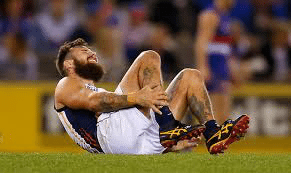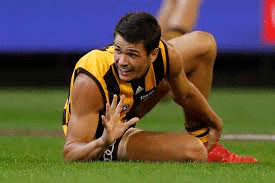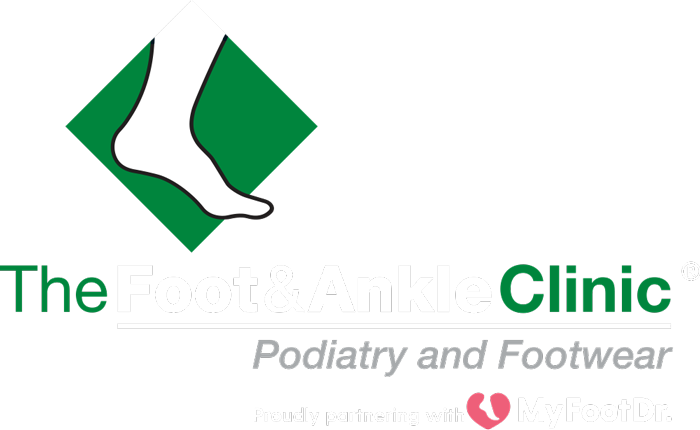Australian Rules Football (AFL) and Podiatry
 By Dr. Hesh Amarasekara (Podiatrist)
By Dr. Hesh Amarasekara (Podiatrist)
As the summer months starts turning into an autumn breeze, we edge closer to my favourite time of the year, the football season. A joyous time for many Australians, football as we know it brings communities together, portrays passion that is unseen in comparison with other sporting codes. As a spectator, the football has been great viewing over the past few weeks since the return on to the big stage, but for the players of all levels the football season has been a long time coming. A long and gruelling pre-season is now a necessity for players to physically develop their bodies and improve their skill set to best prepare themselves for the long season ahead of them.
The physical requirements of the modern-day player have significantly shifted from decade to decade. The players now are spending longer periods of time on the ground due to capped on-field rotations. Today at the highest level of the game (AFL) players must have their bodies in peak physical condition as they would look to run (at varying speeds/intensity) on average between 9-20 kilometres per game.
This average isn’t taken from the midfielders who spent the majority of the game in the engine room, last week (RD3, 2018) key position players such as Ben Brown and Daniel Tahlia had both covered more than 14km over for the duration of the game, demonstrating the need for adequate preparation throughout the preseason to handle the riggers of AFL football and to be able to do it all again a week later.
It’s not just the total distance covered in the game which makes the sport unique, throughout a match a footballer will be required to sprint, tackle, jump, handball and kick repeatedly. Due to the physical nature of football acute injuries are common especially, to the lower limb; these injuries can be either soft tissue or bone related. These types of injuries can occur suddenly and have the potential to cause significant pain. Examples of common acute injuries a footballer may be exposed to are:
- Ankle sprains
- Ligament tears/rupture (ankle, knee)
- Bone fractures/break (Leg, Foot, Ankle)
- Turf Toe

Overuse/ chronic injuries occur through excessive wear and tear of a specific muscle, tendon, and ligament without adequate recovery. With increments of exercise throughout the preseason, if not properly adapted the player may expose themselves to potential injuries that may hinder their ability to perform at peak fitness throughout the year. Overuse use injuries that commonly affect footballer’s lower limb are:
- Achilles tendonitis
- Sesamoiditis
- Plantar Fasciitis/Fasciosis (heel pain)
- Medial Tibial Stress Syndrome (Shin splints)
- Hamstring Strains
- Calf Strains
Common football injuries for children:
The injuries above can be prevented and the time spent on the sidelines may be reduced if interventions are applied appropriately. Early assessment and biomechanical review of the patient’s muscle, joint, ligament and bone integrity will enable the athlete to be placed in the most appropriate treatment plan to help heal and rehabilitate the injury.

Such specific treatment such as shockwave therapy, prolotherapy, dry needling, strapping, or padding can be provided by our Podiatrists to facilitate healing. If the foot alignment is the cause /risk factor of the symptoms a simple shoe insert or orthotic device as well as footwear advice/modifications will be considered to alleviate and prevent ongoing pain/limitations. Depending on the severity of the injury immediate treatment may be required. At the Foot and Ankle Clinic we can provide multiple forms of offloading CAM-boots that are readily available.
The injuries mentioned earlier can be aggravated by simply choosing a football boot that is unsuitable or simply not fitted correctly. Boot choices initially should be based on your foot type, injury history and the type of surfaces played on (moulds/blades). Typical Irritations found with ill-fitting boots are corns, calluses and blistering. If additional support is required within the boot, a Podiatrist may assist with strapping, padding, prescribing orthotics (customised to over-the-counter) into football boot and running shoes.
At the Foot and Ankle Clinic our highly qualified team of Podiatrists are all members of the Australian Podiatry Association and offer a combined 50 years’ experience. They are trained to diagnose and effectively treat football injuries via a range of treatments.
Put your feet in our hands! See us today in Chadstone, East Bentleigh, Moe, Sale, Traralgon, Warragul & Online Store and Retail Enquiries. NO REFERRAL NEEDED!.

